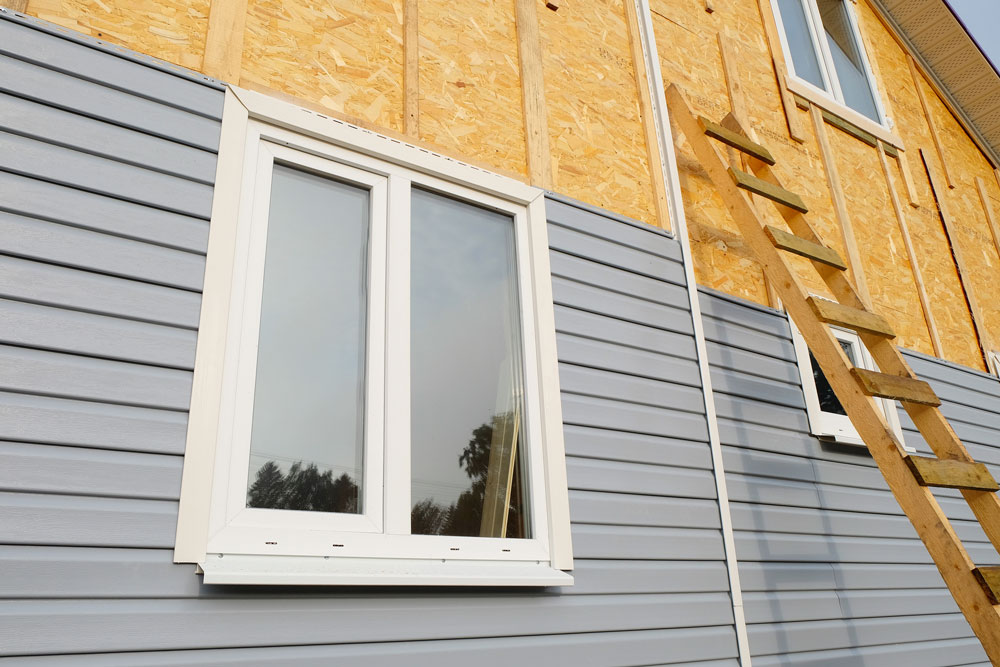Posted: 26th July 2023 | Author: Jamie Brown | Category: Cladding
Back to news
Cladding is a frequently used term in the construction world. However, if you're not familiar with cladding, then it can be hard to research the various options out there. To learn more about it so you can decide what is right for your project, keep reading.
In construction, cladding refers to material fixed to the external walls of a building without affecting its structural integrity. In other words, cladding doesn’t help to strengthen the walls or keep them standing.
So what’s the point in having cladding? Well, most of the time the usage of cladding can be put down to one of two reasons. Sometimes, cladding is installed to improve the thermal efficiency of a building by insulating it to keep the masonry warmer. Other times, cladding is used to make the property appear more physically appealing. Often, the decision is down to a combination of the two.
Regardless of why cladding is installed, it shouldn't detract from the property's other aspects. For example, it shouldn't impede on health and safety, structural integrity or weather resistance.
In many cases, cladding is added to existing buildings as a form of renovation. However, it can also be incorporated into the design of a new build property.
As we’ve mentioned, one key aspect of choosing the right cladding for your property is determining what you want it to look like. Cladding is available in all sorts of materials to suit any need. In some cases, you can choose cladding that is made of one material and yet designed to look like another. Faux stone is a great example of this.
When you make your decision, it’s also vital to consider the area you live in. Certain locales have stricter guidelines as to the visible, external renovations that can be done. You may have to factor such restrictions into your choice of cladding material. Your decision will also have to comply with standard building regulations. For this reason, it's worth checking that your choice is suitable before you buy.
Wooden or timber cladding is a favourable choice for both internal and external cladding, with its natural look and versatility. As one of the most environmentally friendly options, timber cladding comes from a sustainable source and is far more reusable than some other materials. Wood is also a very stable material that aligns with many contemporary design trends.
While wooden cladding needs to be maintained and treated to keep it looking its best, it does offer certain advantages beyond being an eco-friendly resource. Wooden cladding can be installed horizontally, vertically and diagonally, meaning that there is far more variety to be found in timber cladding designs. Plus, timber cladding comes in all different colours as required, so you won’t have to worry about whether or not it fits with your current colour scheme.
As one of the most affordable cladding materials on the market, uPVC is a popular choice. Otherwise known as Unplasticised Polyvinyl Chloride, uPVC has a range of positive attributes that make it a great choice for external cladding. Here are just a few of the beneficial properties of uPVC cladding:
On the other hand, plastic isn’t as environmentally friendly as timber, and is more difficult to dispose of should it need to be removed or replaced. Additionally, designs are less flexible when uPVC is involved as opposed to timber, so you’re a little more restricted when it comes to unique aesthetics.
Stone cladding is another popular choice for both inside and outside the house, with a similar natural feel to timber. It can be quite heavy, though, which makes it harder to transport and install. There are lots of different types of stone that can be used for cladding, including marble, granite and slate. Typically, stone cladding is more expensive than lighter types of cladding, but faux stone can be a more affordable option. However, real stone can be an excellent choice if the building is regularly exposed to harsh weather conditions. With a greater level of protection on offer than other alternatives, stone is well worthwhile.
While metal cladding provides a very different aesthetic that is often preferred for commercial buildings rather than domestic, it can be a good choice for either. Whether you opt for steel or aluminium, metal offers a good level of weather protection and insulation for the primary building, as well as being fire resistant. Metal can also be very cost effective, too, with a relatively simple installation process.
Back to news
The Author: Jamie Brown
From my early working life as a labourer, then becoming a builder and a property developer, I have been buying and using building materials for over 25 years. I set about to start a builders merchant which can offer high-quality products and significant savings along with speedy delivery to keep your sites moving. Still having a foot in the construction industry on my own property, I always make sure the products we sell are up to our high standards which is important for us to keep a great image for the company and superior reputation to supply quality!